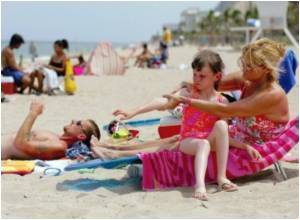Research led by St. Jude Children's Research Hospital investigators say that childhood cancer survivors diagnosed later with non-melanoma skin cancer may be at increased risk for another cancer

"These findings suggest non-melanoma skin cancers are a potential marker for survivors who are at risk for future invasive malignancies," Armstrong said.
The study involved 14,358 childhood cancer survivors whose cancer was diagnosed between 1970 and 1986. All are now participating in the CCSS, which is funded by the National Cancer Institute to track the health outcomes of childhood cancer survivors. Armstrong is project director for CCSS, which includes investigators at 30 institutions in the U.S. and Canada. St. Jude is the central coordinating institution. Les Robison, Ph.D., St. Jude Epidemiology and Cancer Control chair, is the CCSS principal investigator. He is also this study's senior author.
Childhood cancer survivors are known to be at increased risk for additional cancers, which remain a leading cause of disability and death among those who beat cancer the first time. "This study is the first to track the risk of multiple malignancies in a large group of aging cancer survivors," Armstrong said. The average survivor in this study was age 36.
Nearly 10 percent of study participants, or 1,383 survivors, reported being diagnosed with a second tumor. The group included 231 survivors found to have a third tumor and 153 individuals diagnosed with four or more. The analysis found that nearly 39 percent of childhood survivors diagnosed with one subsequent tumor went on to develop another within 15 years.
Advertisement














